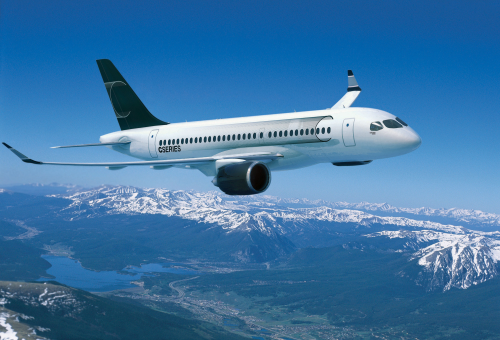
The CSeries features a body built of 70% advanced structural materials to deliver weight savings. 46% of the body – including the wings – will be advanced composite materials.
This is another step in the five-phased development of the Mirabel plant, which will ultimately double in size to some 860 000 ft2 (79 897 m2).
Space optimisation and re-tooling at the Mirabel facility began last month to accommodate final assembly of the first CSeries aircraft required for the flight test and certification programme.
Bombardier reports that the Complete Integrated Aircraft Systems Test Area (CIASTA), the first area at the Mirabel plant developed for the CSeries aircraft programme, is progressing on schedule, and systems rigs are currently being installed. In addition, new buildings for the CSeries aircraft programme will include a supplier satellite area, final assembly structural joining and pulse line areas, an area for pre-flight testing, paint shops, and a delivery and administrative centre.
Assembly techniques
While they will be shorter than the 128 ft (39 m) long CRJ1000 NextGen regional jet, the largest aircraft currently produced at the Mirabel plant, the CSeries will have a fuselage with a larger diameter, their wings will be longer and their tails taller than those on the CRJ1000 NextGen. Bombardier will therefore employ different final assembly techniques to those used for its regional jets. As an example, two pairs of robots will be used to drill holes, apply sealant and install fasteners to join the major sections of the CSeries aircraft’s fuselage.
“Advanced robot technology will provide predictable repeatability, enhance quality and prevent ergonomic issues on the assembly line,” says Francois Minville, Vice President, CSeries Manufacturing, Bombardier Commercial Aircraft. “The fuselage of the CSeries aircraft is 12 ft (3.7 m) in diameter, which presents an assembly challenge using our conventional methods. The benefit of the robots is they can work on the top, the side and underneath the aircraft without any limitations.”
A moving production line is being introduced at Bombardier’s St-Laurent Manufacturing Centre, where major components of the CSeries aircraft, such as the cockpit and aft fuselage, are being produced, and a moving final assembly line is planned for Mirabel.
CSeries
The CSeries aircraft are designed for the single-aisle 100- to 149-seat commercial aircraft market. Bombardier’s goal is to capture up to half of its forecasted market demand for 6700 aircraft in this segment. This segment is valued at $393 billion over the next 20 years.






